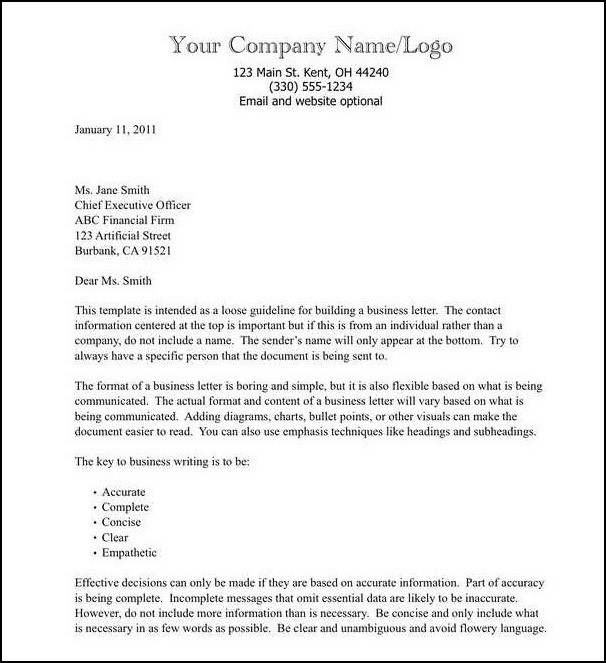What is Technical Communication?
2.2 Business Correspondence
Business Letters
A formal professional letter, or business letter, is a letter written in a formal writing style and often used for correspondence between an organization and a customer or client. Correspondence includes all communication shared between a business entity and consumers or clients. Formal language refers to language that is professional in tone and does not contain clichés or colloquialisms. It is important to remember that a business letter is a legal document between the interested parties. These documents can be held up for seven years, so it is important all business letters contain validated information.
When to use a business letter
Business letters contain factual information and are meant to be legal documents. Situations that best fit a business letter may include situations that involve sharing information with others who are outside of the company. Customers, shareholders, or clients would all be appropriate audiences for a business letter.
While business letters are still used, email has become a more common way of communicating with clients, customers, and others outside of the internal business environment. Despite this, companies will still send out business letters, particularly when the information the company is presenting needs to be secure or includes other sensitive information.

Formatting a Business Letter
- Use single spacing, never double space a business letter
- Use a font that is easy to read
- Block paragraph. Leave a line of space between each paragraph.
- Include address of sender and recipient at top of the document with the date separating the two addresses. The address for the sender is always listed first, as the header.
- Begin your letter with a greeting (e.g. Dear Mr. Smith)
- The introduction introduces the purpose for the letter. Include a statement in the introduction showing you are knowledgeable of the audience to which your letter is directed.
- The body of the letter provides background history of the situation and shares key points. You will also list any important details in the body of the letter, and asks questions if they are necessary.
- The conclusion should summarize key points from the letter and include any deadlines.Contact information is also shared in the conclusion.
- End with a closing salutation (e.g. kind regards, sincerely)
- Business letters often include enclosures. List any enclosures you have one line below the closing.
- Proofread and edit your business letter carefully.
Be aware that when writing a professional letter company letterhead should be used. You should also use any other formatting or design that is used by the company for which you are communicating.
Memorandums (Memos)
When to use a memo
Only use memos when you are communicating information internally, within the confines of the company. Occasionally, memos may be external, but these occurrences are often reserves for areas of government or information shared with parties that are closely related to an issue of business regarding the company. Use memos for internal communication about organizational procedures and changes.
Formatting a memo
- Make sure to follow the format and style of the company
- Single space and block paragraph all memos
- Include To, From, Date, and Subject lines at the top of the memo
- Use a CC line when indicating someone other than the recipient receives a copy of the memo
- Make sure to separate items linked together in list format. Use bullet points for any lists.
- You may also list facts or figures in columns within a table. A table should be properly formatted with the title above the table and shown as the following: Table 1: Title of Table.
- If you are using images in a memo or a letter, make sure to label these as figures. You can see samples of labeled figures within this text, but just like tables figures are also numbered with appropriate titles.
The sample below gives an example of a memo:
To: Netflix Employees
From: Andrew Guest
Date: September 20, 2016
Subject: Netflix Price Changes
As you know, there has been a change in the prices of the Netflix services as well as a separation of the DVD and streaming services. We are changing the Netflix Company for the better and we would like our employees to see the benefits of the changes as well as recognize the growth of the company.
The Plan
We need to help bring confidence back to our customers and show the growth potential of the Netflix streaming and DVD services. We as a company need to reinsure our customers and bring the potential of Netflix to its maximum.
Management Positions
...
One thing you may notice from the sample memo text above is that memos do not have a conclusion. Many times, memos may just end without a conclusion. This is because they are meant to share specific information in a short format, similar to email.

